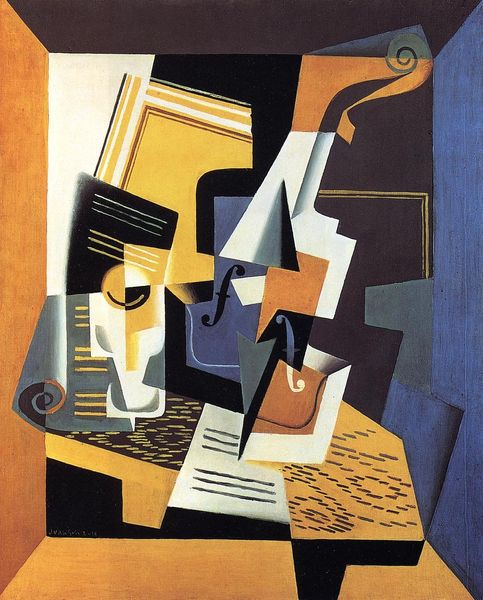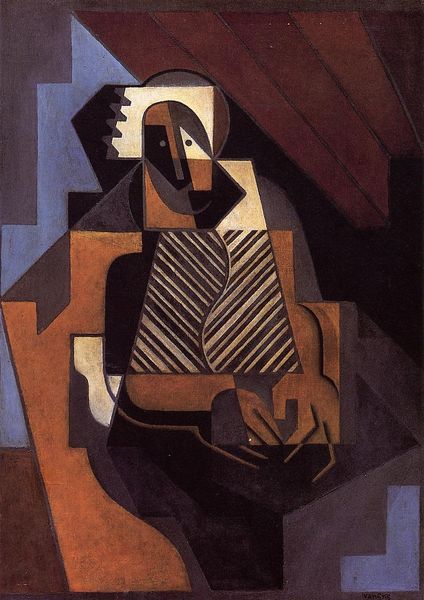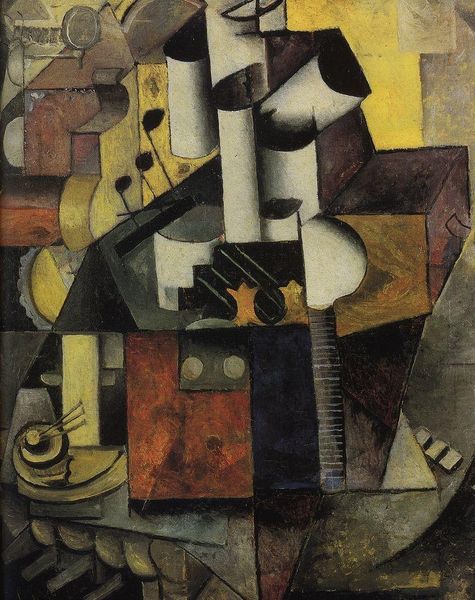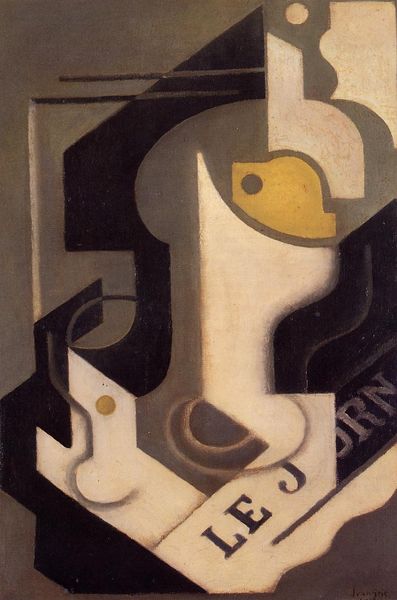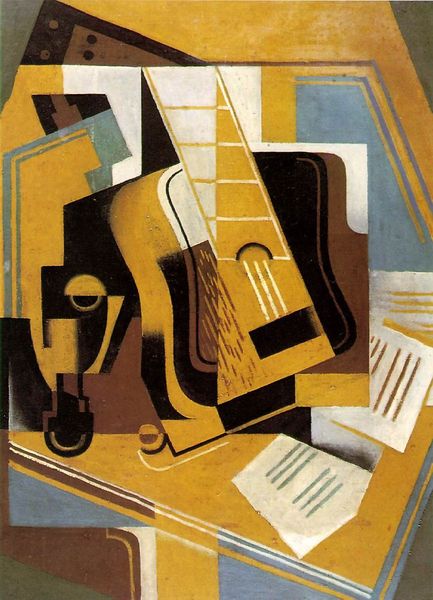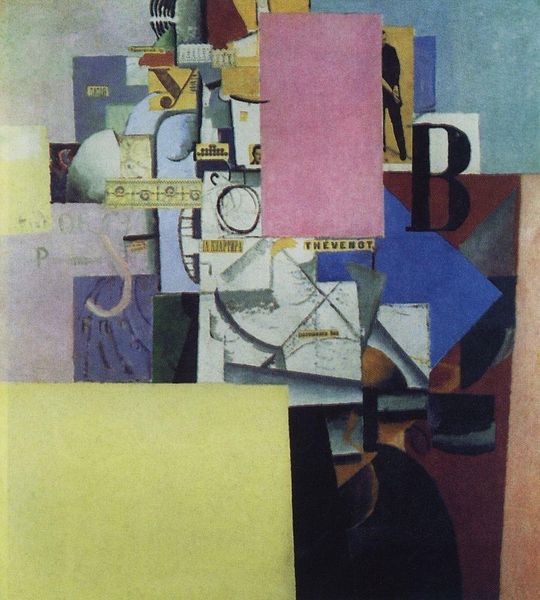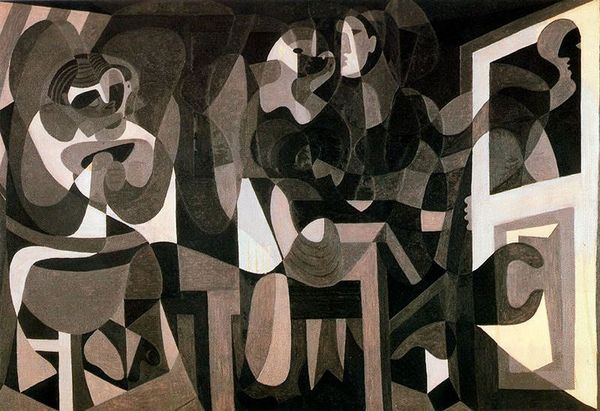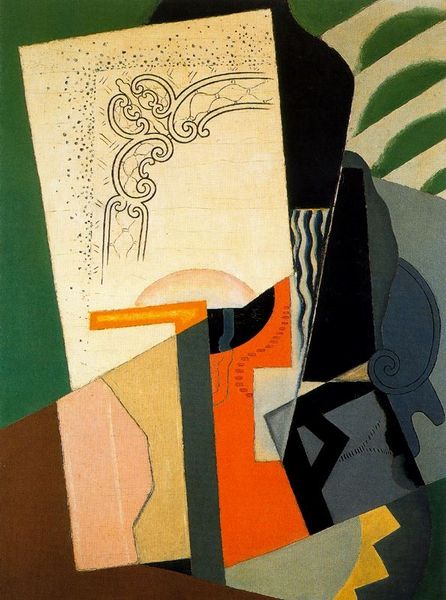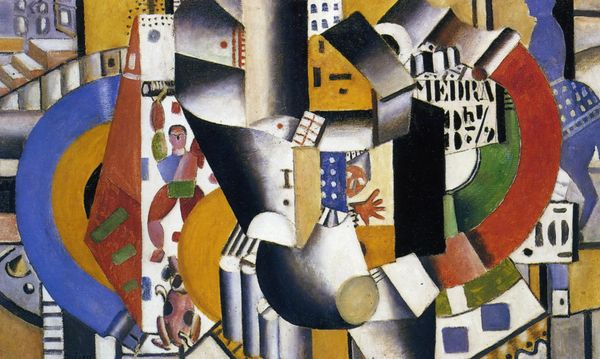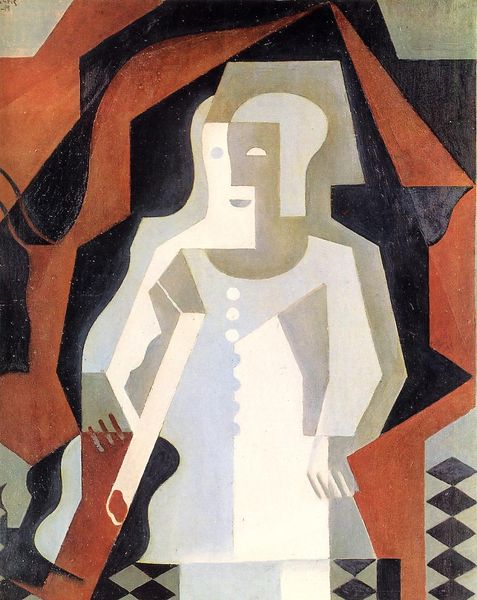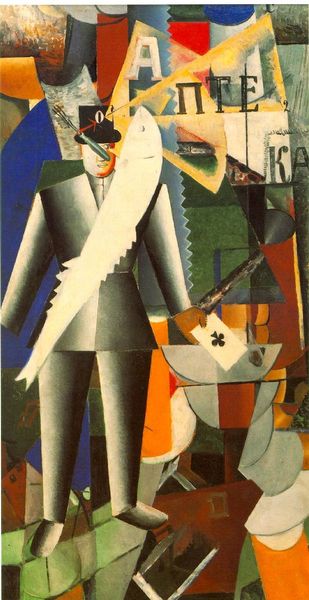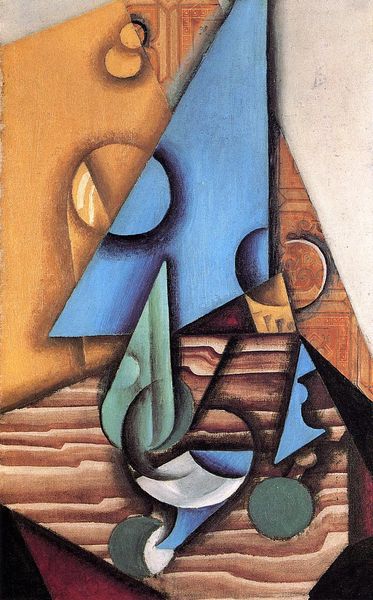
painting, oil-paint
#
portrait
#
cubism
#
painting
#
oil-paint
#
figuration
#
oil painting
#
geometric
Dimensions: 101 x 65 cm
Copyright: Public domain
Editor: So here we have Juan Gris' "Harlequin at a Table" from 1919, painted in oil. The geometric forms and muted color palette give it a sort of melancholy, fragmented feeling, almost like a broken mirror. How do you interpret this work in terms of its historical and cultural context? Curator: It’s more than just a broken mirror, I believe; it’s a reflection of a society pieced back together after the shattering experience of World War I. Gris, deeply embedded in the Cubist movement, uses the harlequin figure, traditionally a symbol of the performer and trickster, as a mask. Think about the historical backdrop: Europe reeling from unprecedented loss, searching for meaning, with fractured identities emerging. Editor: So the fragmentation mirrors societal fragmentation? How does this tie to intersectional narratives? Curator: Precisely! The harlequin, historically a figure of marginality, takes on a deeper resonance. Cubism, in its very deconstruction of form, challenges singular perspectives. In the context of 1919, doesn't this fracturing invite us to consider those whose narratives were systematically erased, obscured or marginalized? Consider the intersection of class, gender, and identity, all vying for visibility in the aftermath of war. This deconstruction could mirror the upending of social structures and the challenge to traditional hierarchies. Who, historically, was afforded a seat at the table? Who was deemed a performer, an outsider looking in? Editor: That makes so much sense! So the Harlequin becomes a kind of symbol for suppressed voices? Curator: He becomes a vessel. Gris isn't merely painting a clown; he's presenting a complex, multi-layered individual navigating a world struggling to redefine itself. We can read it through the lens of marginalized identities seeking recognition and representation. Editor: Wow, I never considered that. I always thought of Cubism as being purely formal, but I see the potential to read social narratives into it now. Curator: Precisely! By deconstructing the Harlequin, Gris also prompts us to deconstruct our own assumptions about identity and representation. Editor: I’ll definitely look at Cubism differently from now on!
Comments
No comments
Be the first to comment and join the conversation on the ultimate creative platform.

